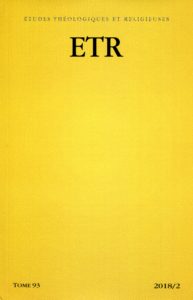Le traité Péri Parrhêsias (PHerc. 1471) de Philodème de Gadara représente une source majeure pour la compréhension de la parrhêsia épicurienne. En comparant la manière dont Luc utilise la parrhêsia avec celle de Philodème, il apparaît que la première s’appuie sur la seconde, tous les thèmes philodémiens étant présents dans quasiment toutes les péricopes lucaniennes. Néanmoins, Luc adapte la parrhêsia à son propre projet narratif, tout en lui donnant un rôle stratégique pour décrire l’expansion de l’Évangile jusqu’aux extrémités de la terre. La thèse traite toutes les péricopes lucaniennes παρρησια ou παρρησιασομαι. À titre d’exemple, nous mettons ici en exergue Ac 9,27-28.
The Péri Parrhêsias treatise (PHerc. 1471) of Philodemus of Gadara represents a major source for the comprehension of Epicurean parrhêsia. When comparing the manner in which Luke employs parrhêsia with that of Philodemus, it is apparent that the former relies on the latter, all of the Philodemus themes being present in practically all of the Lucan pericopae. However, Luke adapts the parrhêsia to his own narrative project, all while giving it a strategic role in describing the expansion of the Gospel unto the ends of the Earth. The thesis treats all Lucanian pericopes containing παρρησια or παρρησιασομαι. As an example, we highlight on Acts 9, 27.28.
p. 301-316
Auteur
WIENER Hélène
Hélène WIENER est docteur en théologie protestante de l'université de Strasbourg.
